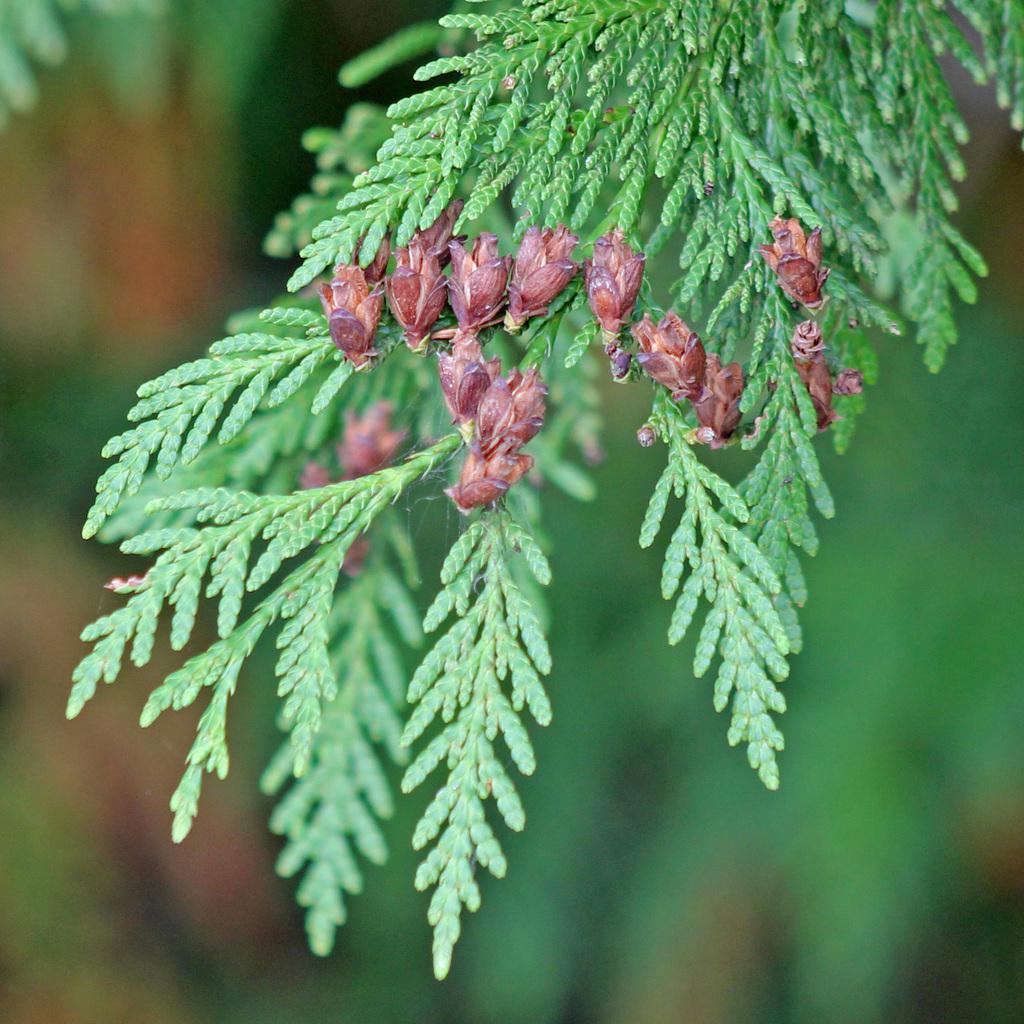Western Redcedars are found along the coast from Alaska to California and in the western mountains. They're most commonly found in moist rainforests but can grow on dry or rocky slopes.
Western Redcedars are tall (150-200 ft) trees with a conical or irregular crown and branches that turn up at the tip. The trunk spreads out at the base and is very broad. They have furrowed, stringy, gray to reddish-brown bark and flat sprays of fragrant scale-like leaves in alternating pairs, glossy green above and white-striped below. They have small (.33-.75 in), egg-shaped cones with overlapping scales.
Western Redcedars can live for up to 1000 years if left undisturbed and can reproduce from roots or branches of fallen trees (nurse logs).
Could it be? Yellow-cedars are very similar but have drooping branches and very small (.25-.5 in) berry-like cones that become brown and woody when mature. Redcedars' bark comes off in long strips while Yellow-cedars' gray-white to gray-brown bark flakes off in smaller sections. The needles and bark of Rocky Mountain Junipers are similar to those of Western Redcedars; however, Rocky Mountain Junipers have blue berry-like fruit while Western Redcedars have small, egg-like cones.
Did you know? Western Redcedars aren't actually cedars. True cedars are only found in the Mediterranean; however, other trees are given this name if they are very fragrant.
See Also: Balsam Fir, Common Juniper, Douglas-fir, Engelmann Spruce, Jack Pine, Lodgepole Pine, Rocky Mountain Juniper, Spruce, Tamarack, Western Hemlock, Western Larch, Whitebark Pine






